14 Plants That Look Lovely and Work Hard in Your Garden
Plants do more than add beauty to your space since some of them are incredibly functional, too. Whether it is purifying the air, providing food, or offering natural pest control, there is a plant for every need. Adding these plants to your home or garden can not only enhance the aesthetic but also improve your environment. Keep reading to discover plants that pull double duty. You may find a few that will fit perfectly into your space.
This post may contain affiliate links, which helps keep this content free. Please read our disclosure for more info.
Lavender (Lavandula)
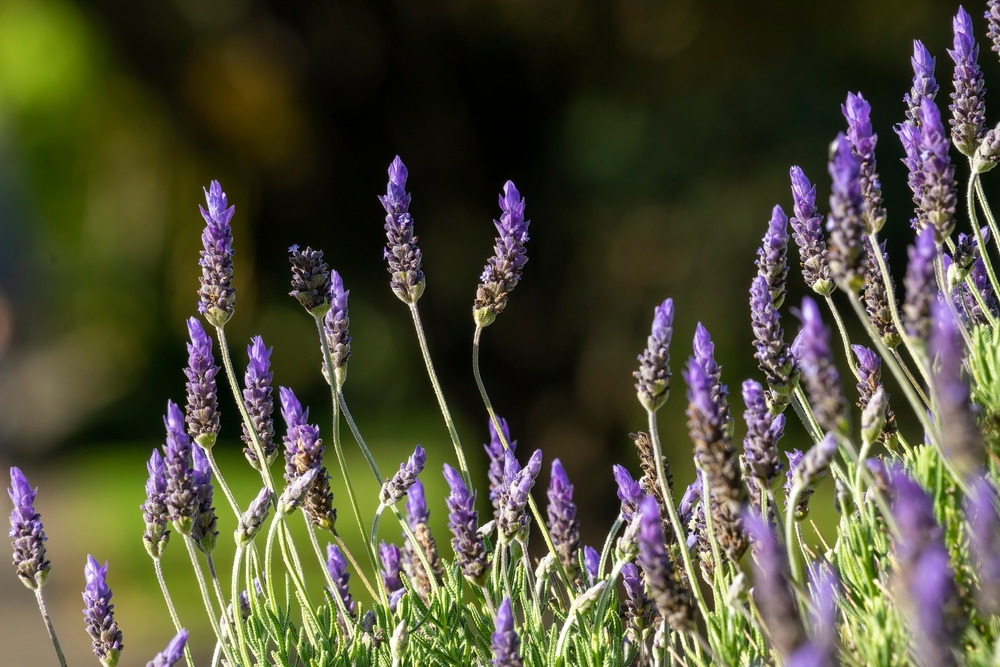
Lavender is well known for its beautiful purple flowers and fragrant scent. Beyond its aesthetic appeal, it also has practical uses, such as repelling pests like mosquitoes and moths. Planting lavender in your garden can help reduce the need for chemical insecticides. Additionally, its oil has been used for its calming properties in aromatherapy, making it a versatile choice for any garden.
Not only does lavender look great in borders or as ground cover, but it also attracts pollinators like bees and butterflies. It thrives in well-drained soil and full sunlight, making it a low-maintenance plant. Lavender’s ability to reduce pests naturally makes it a must-have for eco-conscious gardeners. It is a perfect addition to both ornamental and functional gardens.
Aloe Vera (Aloe barbadensis miller)
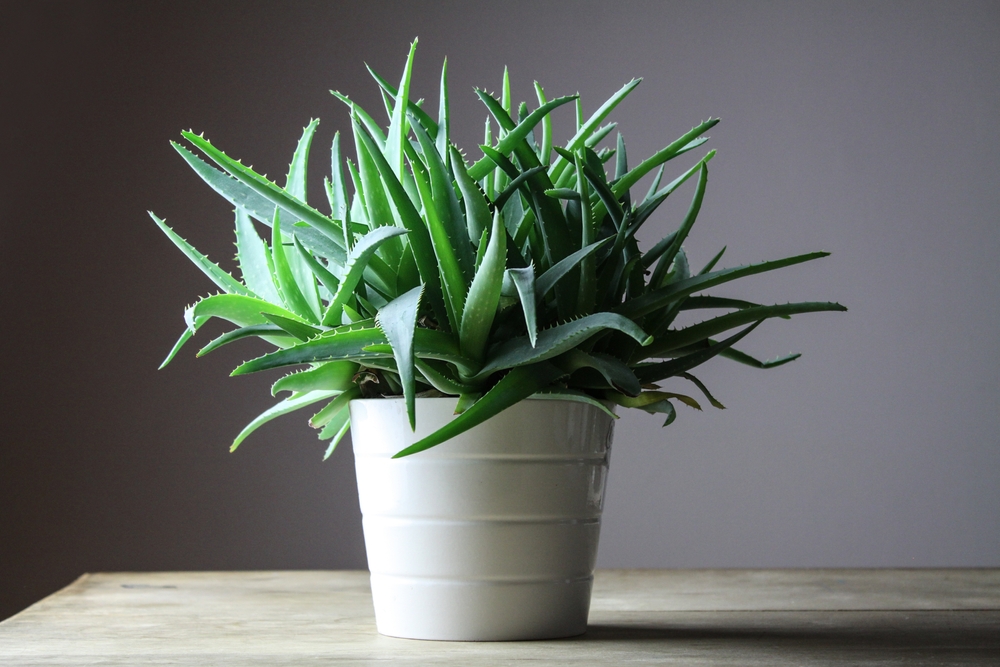
Aloe vera is a striking succulent with thick, fleshy leaves that store moisture. Its medicinal properties make it a great addition to any garden, as its gel can soothe burns and skin irritations. Aloe vera is an excellent plant for dry areas, as it requires minimal water once established. This hardy plant can be grown both in pots and in the ground, adding a modern touch to your garden.
In addition to its healing properties, aloe vera can also help purify the air. It thrives in direct sunlight and needs very little maintenance, making it perfect for busy gardeners. Aloe vera also acts as a natural pest repellent, helping to keep unwanted insects away. With its low upkeep and many uses, aloe vera is both functional and visually appealing.
Mint (Mentha)
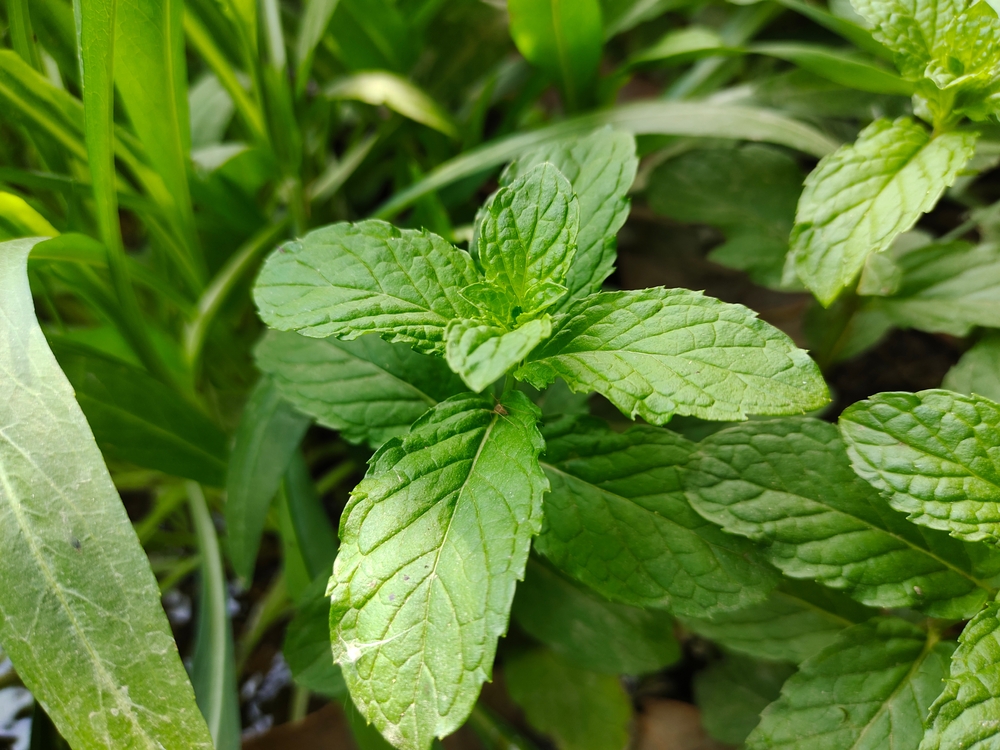
Mint is a fragrant herb that can instantly enhance the look and smell of your garden. It spreads quickly, making it an excellent choice for ground cover or in containers. Mint’s leaves can be used in cooking, tea, and even as a natural remedy for digestive issues. Its vigorous growth makes it an effective ground cover, preventing weeds from taking root.
Not only does mint help keep pests like ants and mosquitoes away, but it is also easy to grow in a variety of conditions. It prefers moist soil and partial sunlight, but it can adapt to different environments. With its vibrant green leaves and ease of care, mint is an attractive and practical plant for any garden. It also helps keep other plants healthy by providing a natural deterrent for pests.
Spider Plant (Chlorophytum comosum)
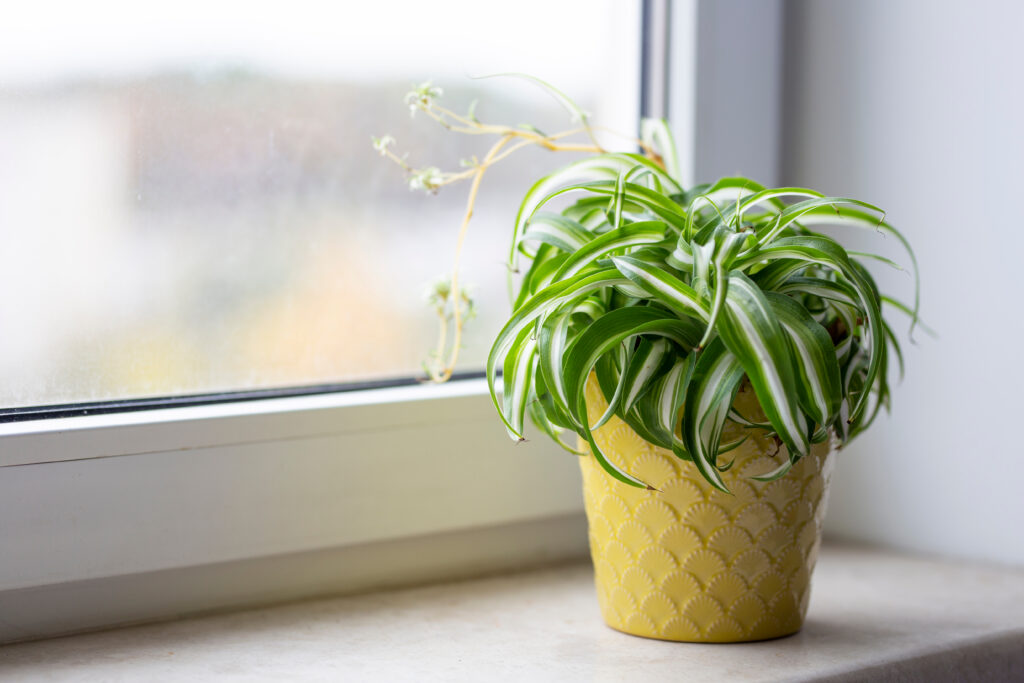
The spider plant is an attractive houseplant that thrives indoors and outdoors. Its long, arching leaves are variegated in green and white, making it a striking addition to any space. Beyond its beauty, it also helps improve air quality by removing harmful toxins like formaldehyde. This makes it an excellent choice for both decorative and functional purposes.
Spider plants are easy to care for and can tolerate a wide range of light conditions. They are perfect for hanging baskets or as ground cover in a shaded garden. The plant also produces small “pups” that can be replanted to grow new plants. With its air-purifying properties and low-maintenance nature, the spider plant is a fantastic functional addition to any garden.
Rosemary (Rosmarinus officinalis)
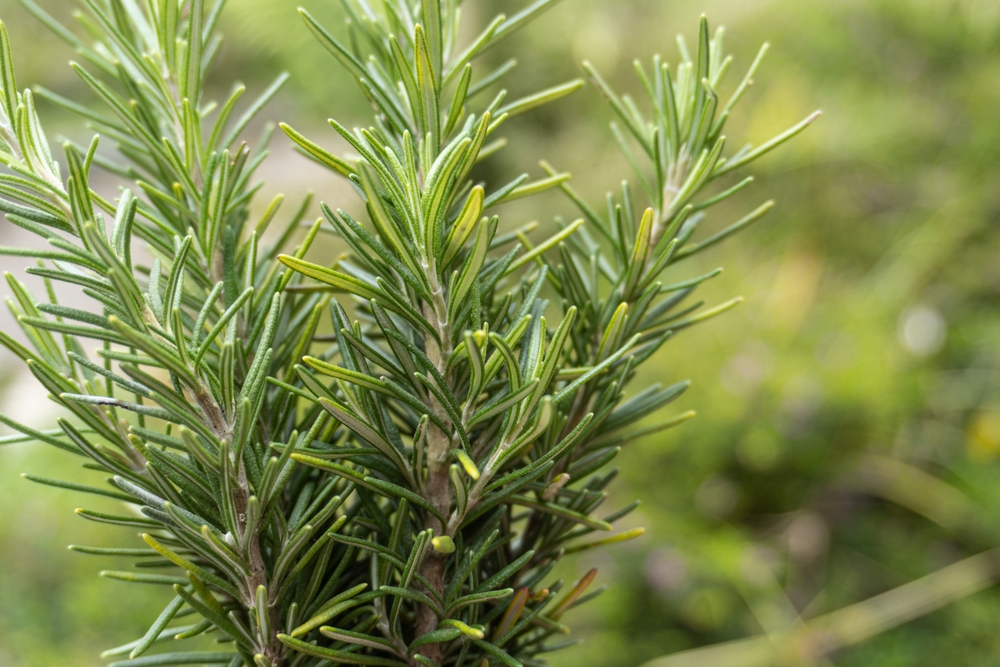
Rosemary is a fragrant herb that adds both beauty and practicality to any garden. Its needle-like leaves are aromatic and can be used in cooking, making it a functional addition to herb gardens. Rosemary is known for attracting pollinators like bees, making it great for encouraging biodiversity in your garden. It is also drought-tolerant, making it perfect for dry climates.
In addition to its culinary uses, rosemary has natural antimicrobial properties. It can be used to make natural cleaning solutions or even as an insect repellent. Rosemary prefers full sunlight and well-drained soil but can grow in a variety of conditions. Its woody structure and aromatic leaves make it a great ornamental herb that does more than just look good.
Snake Plant (Sansevieria trifasciata)
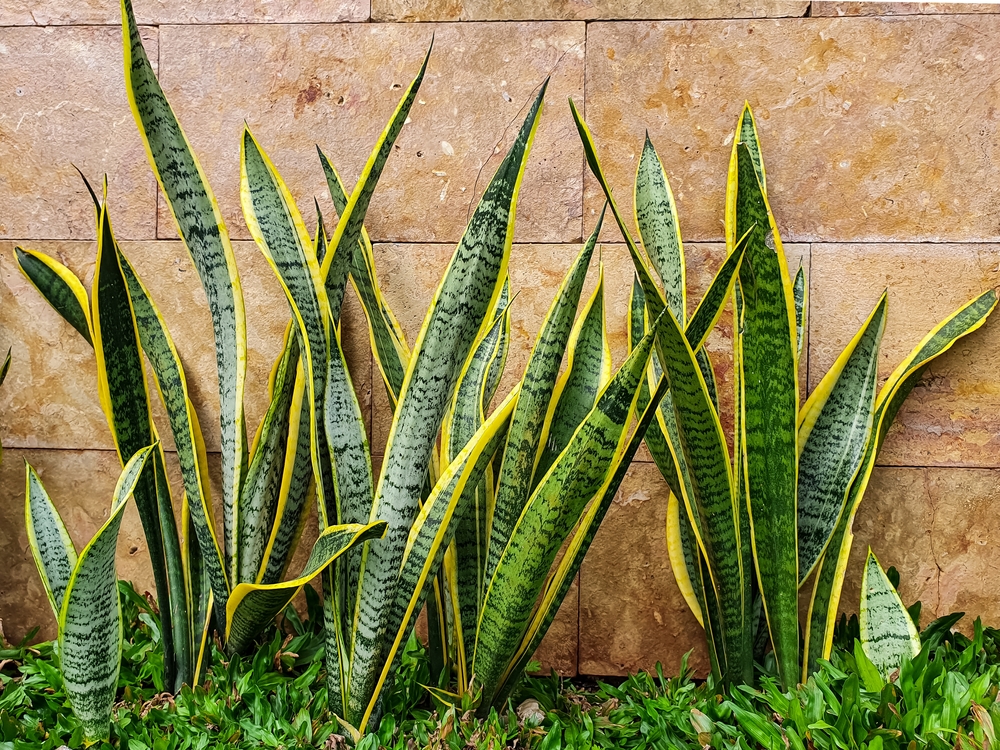
The snake plant, also known as mother-in-law’s tongue, has tall, upright leaves that add a modern, sleek look to any room or garden. It is a low-maintenance plant that thrives in low light, making it perfect for indoor spaces. Snake plants are also excellent air purifiers, as they can filter out toxins like benzene and formaldehyde. This makes them an ideal addition to homes or offices where air quality is important.
In addition to purifying the air, snake plants are incredibly hardy and require little water. They can tolerate drought and prefer indirect sunlight, making them a great choice for busy gardeners. With their striking appearance and air-cleaning abilities, snake plants do more than just look good. They are perfect for anyone looking to add both style and functionality to their space.
Marigold (Tagetes)
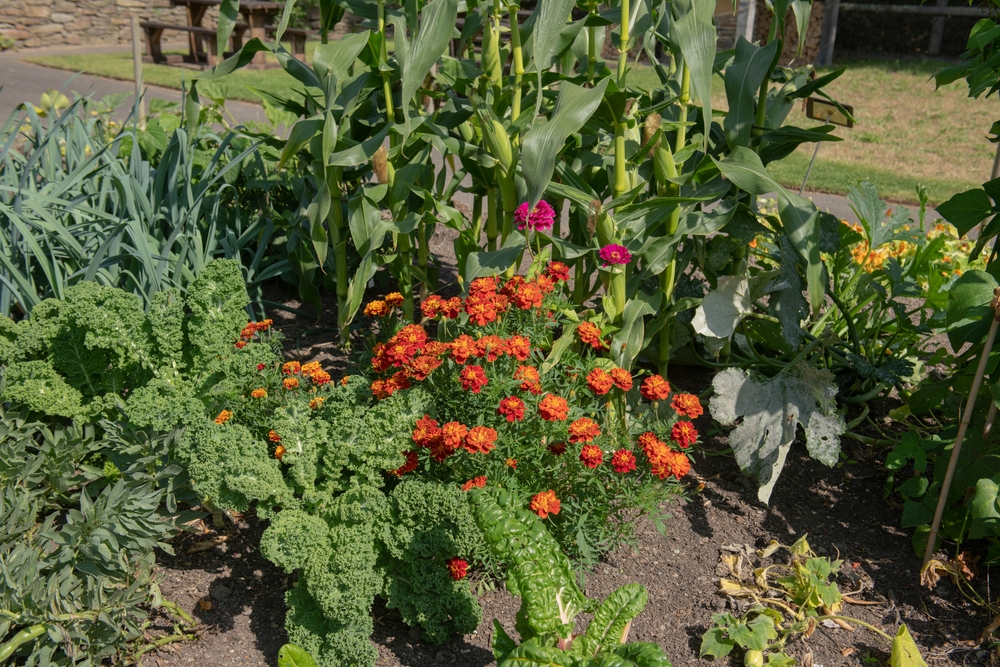
Marigolds are vibrant, colorful flowers that can brighten up any garden. They are known for their pest-repellent properties, particularly for keeping aphids, nematodes, and mosquitoes away. Marigolds are often planted in vegetable gardens to protect crops from harmful pests. Their bright yellow and orange flowers add a cheerful touch to your garden.
These hardy plants thrive in full sunlight and can tolerate a variety of soil types. They are also excellent for attracting pollinators like bees and butterflies, making them a great addition to any garden. Marigolds grow quickly and are easy to maintain, making them perfect for gardeners of all experience levels. Their vibrant colors and ability to keep pests at bay make them both beautiful and functional.
Lemon Balm (Melissa officinalis)
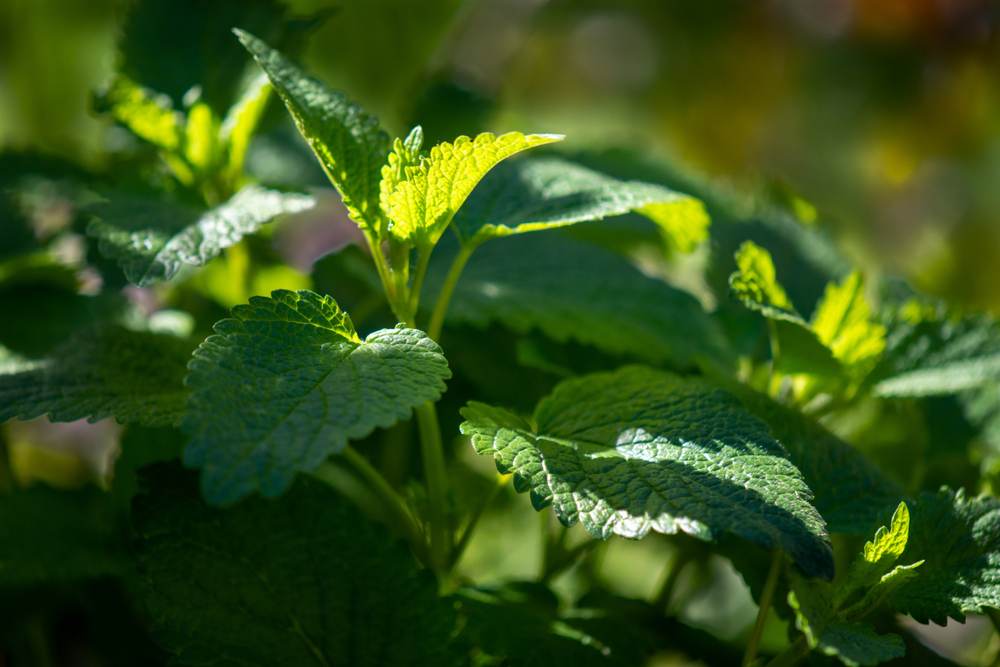
Lemon balm is a fragrant herb with a light, citrus scent that brightens any garden. It is perfect for making refreshing teas and has been used for centuries to ease digestive discomfort. In addition to its culinary uses, lemon balm also attracts pollinators like bees, making it a great addition to a garden focused on biodiversity. It thrives in well-drained soil and enjoys partial to full sunlight.
Lemon balm is also a natural pest repellent, keeping mosquitoes and flies at bay. Its fresh, green leaves add beauty to your garden while offering functional benefits. It is a fast-growing plant, making it perfect for ground cover or as an edging plant. Its calming properties and ability to thrive with minimal care make it an essential functional plant in any garden.
Thyme (Thymus vulgaris)
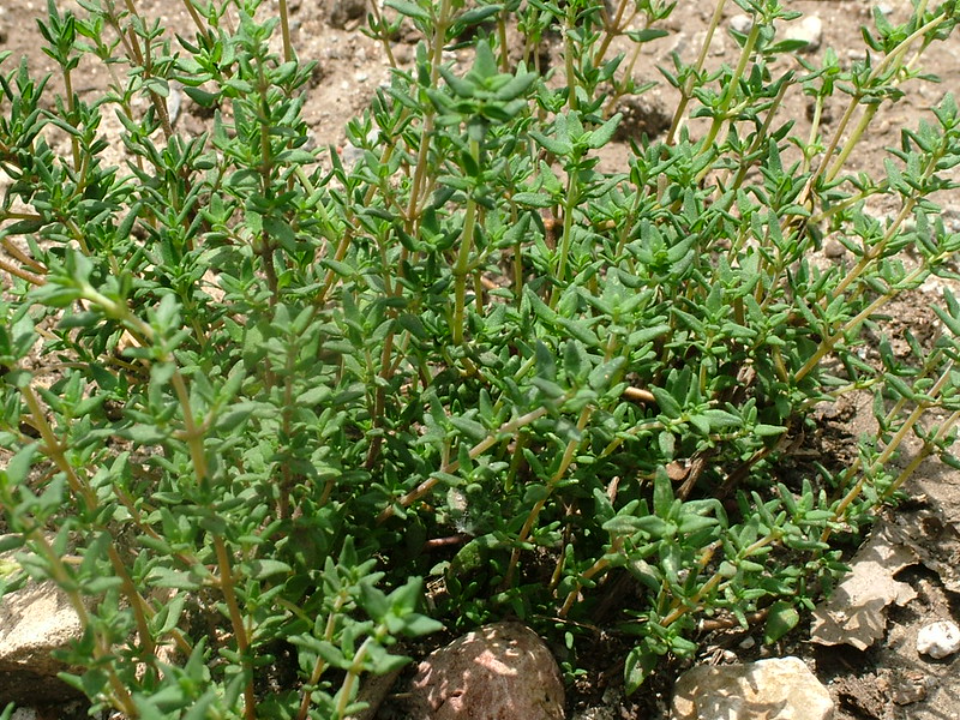
Thyme is a hardy, fragrant herb that is perfect for adding flavor to your meals. It grows in small, dense clusters of green leaves, and its tiny pink or purple flowers attract pollinators. Thyme is drought-tolerant, making it an excellent choice for gardeners looking to conserve water. It can be used both in cooking and as a natural remedy for sore throats or respiratory issues.
This versatile herb can be grown in containers, as ground cover, or as part of a herb garden. Thyme thrives in full sunlight and well-drained soil, requiring minimal maintenance. Its tiny flowers and compact growth make it a lovely addition to ornamental gardens. With its culinary uses and medicinal properties, thyme offers both beauty and practicality to any garden.
Echinacea (Echinacea purpurea)
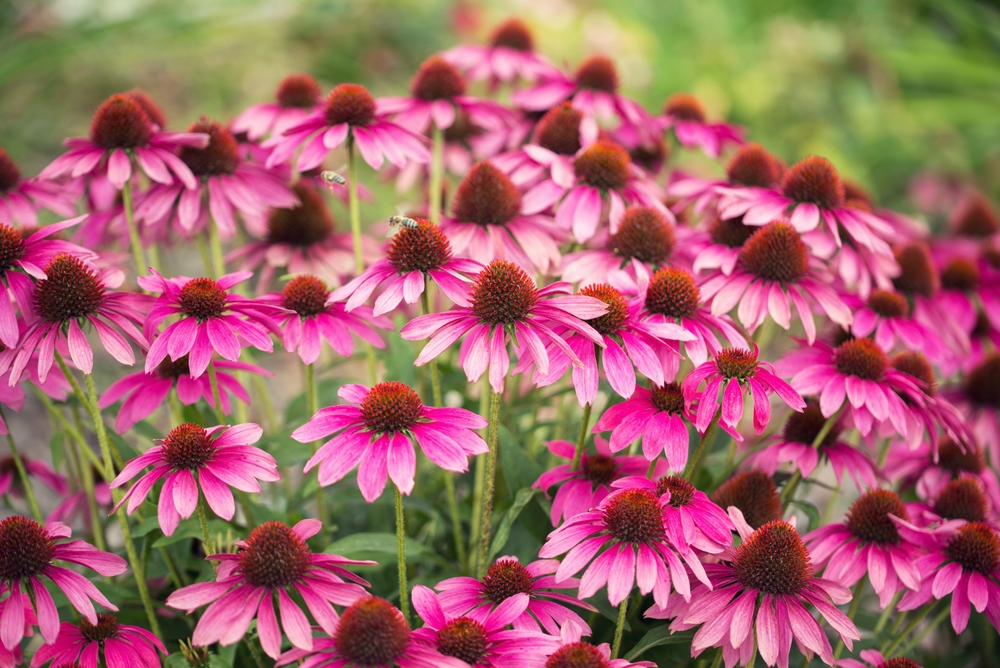
Echinacea, often known as purple coneflower, is a beautiful flowering plant with striking purple petals and an iconic cone-shaped center. It is well known for its immune-boosting properties, making it a favorite for herbalists and gardeners alike. Echinacea can be used to make teas, tinctures, and extracts, offering both beauty and health benefits. Its vibrant flowers are a magnet for pollinators like bees and butterflies.
This perennial plant thrives in well-drained soil and full sunlight, making it an easy addition to a variety of garden styles. Echinacea’s medicinal properties and attractive blooms make it a perfect choice for both functional and ornamental gardens. It can also help improve soil health by attracting beneficial insects. Its colorful flowers and healing properties make it a valuable and beautiful addition to any garden.
Geranium (Pelargonium)
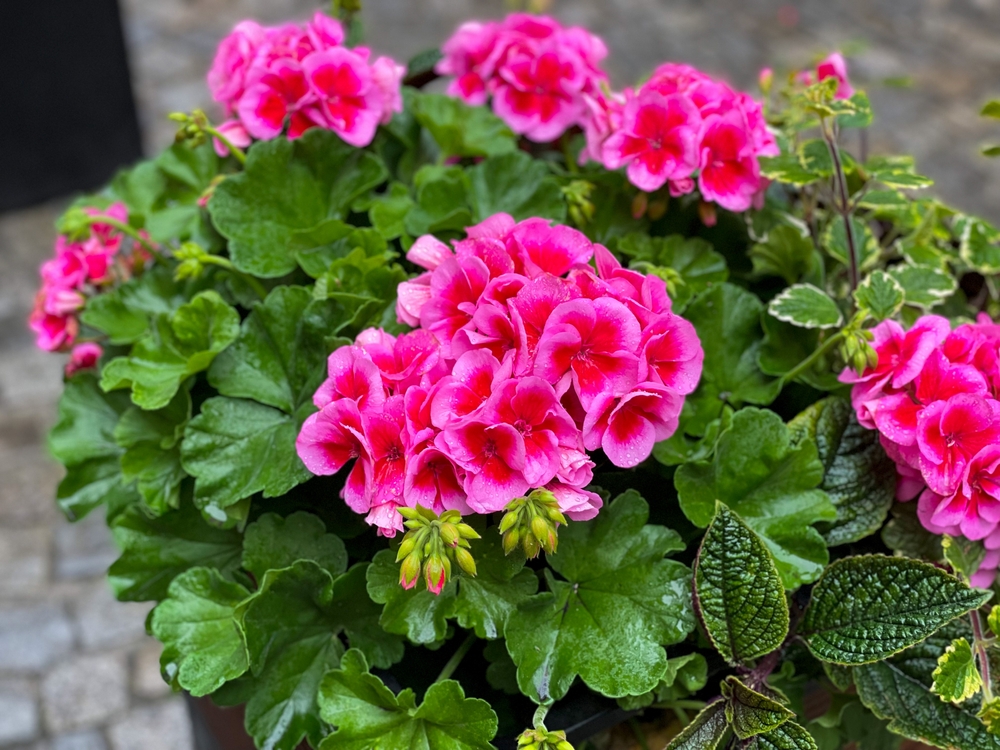
Geraniums are a popular choice for adding vibrant color to your garden. They are not only beautiful but also practical, as they can help repel insects like mosquitoes and aphids. Their hardy nature allows them to thrive in both containers and garden beds. Geraniums are easy to grow and require little maintenance, making them an ideal plant for beginners.
The leaves of the geranium plant contain essential oils that are known to act as natural insect repellents. Geraniums prefer full sunlight and well-drained soil but can adapt to a variety of growing conditions. Their bright, colorful flowers can be used to create striking flower beds or hanging baskets. With their pest-repelling qualities and low-maintenance needs, geraniums are a great addition to any garden.
Nasturtium (Tropaeolum majus)
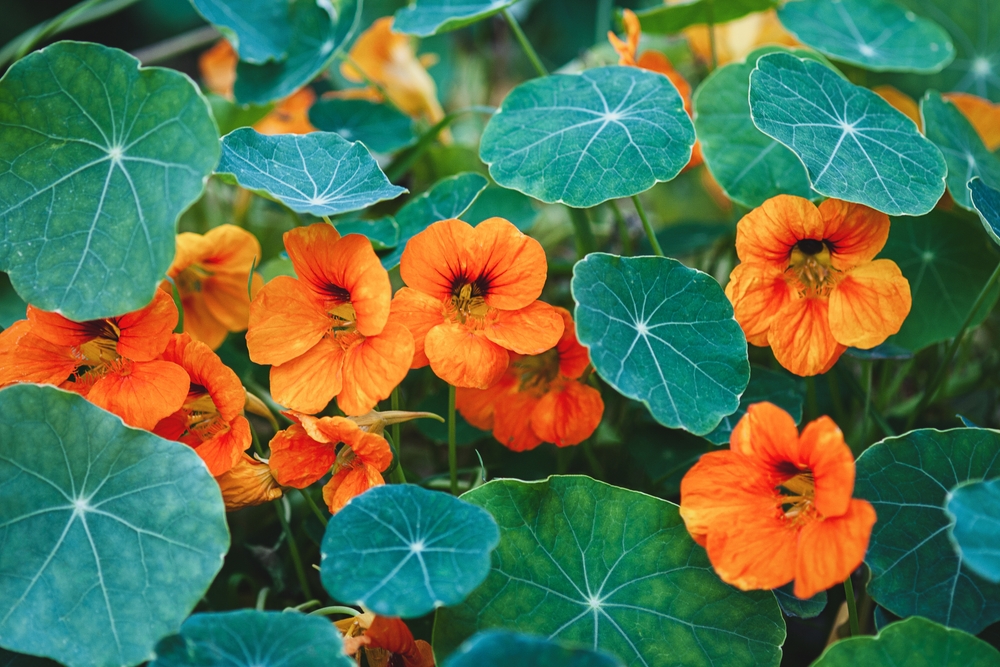
Nasturtiums are bright, beautiful flowers that come in a range of colors, from deep red to bright yellow. These plants are not only stunning but also edible, with both their leaves and flowers offering a peppery flavor perfect for salads. Nasturtiums can be grown as ground cover, in containers, or as climbing plants. They are easy to grow and attract beneficial insects while repelling pests like aphids and whiteflies.
These plants thrive in poor soil and full sunlight, making them an ideal low-maintenance option. Nasturtiums also have medicinal uses, as they are known for their antimicrobial and antioxidant properties. Their vibrant colors add beauty to any space while offering numerous practical benefits. With their culinary and pest-repelling properties, nasturtiums are both functional and beautiful.
Sweet Basil (Ocimum basilicum)
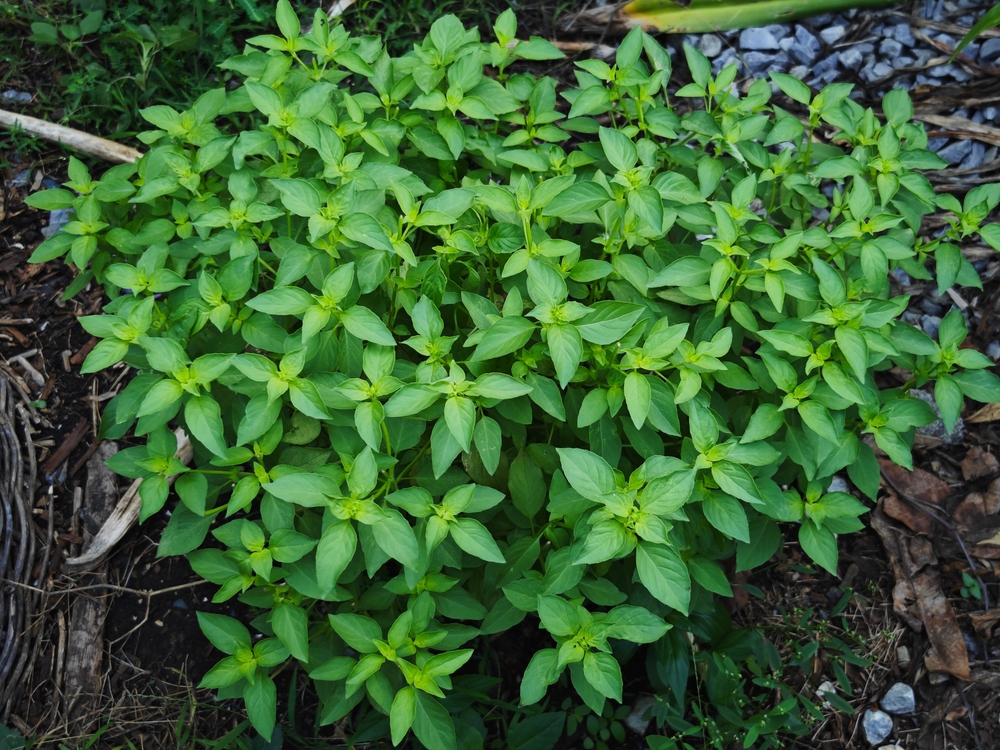
Sweet basil is an herb commonly used in cooking, known for its fragrant, aromatic leaves. This plant is easy to grow and can be cultivated in containers or garden beds. In addition to its culinary uses, basil is a natural pest repellent, particularly for mosquitoes and flies. Its large green leaves and tiny white flowers attract pollinators like bees.
Basil thrives in full sunlight and well-drained soil, requiring regular watering and occasional pruning. It is an essential herb for any garden, offering both flavor and functionality. Sweet basil can also be used to make natural insect sprays and repellents. Its beauty and ability to protect your garden from pests make it a valuable addition to any herb garden.
Chives (Allium schoenoprasum)
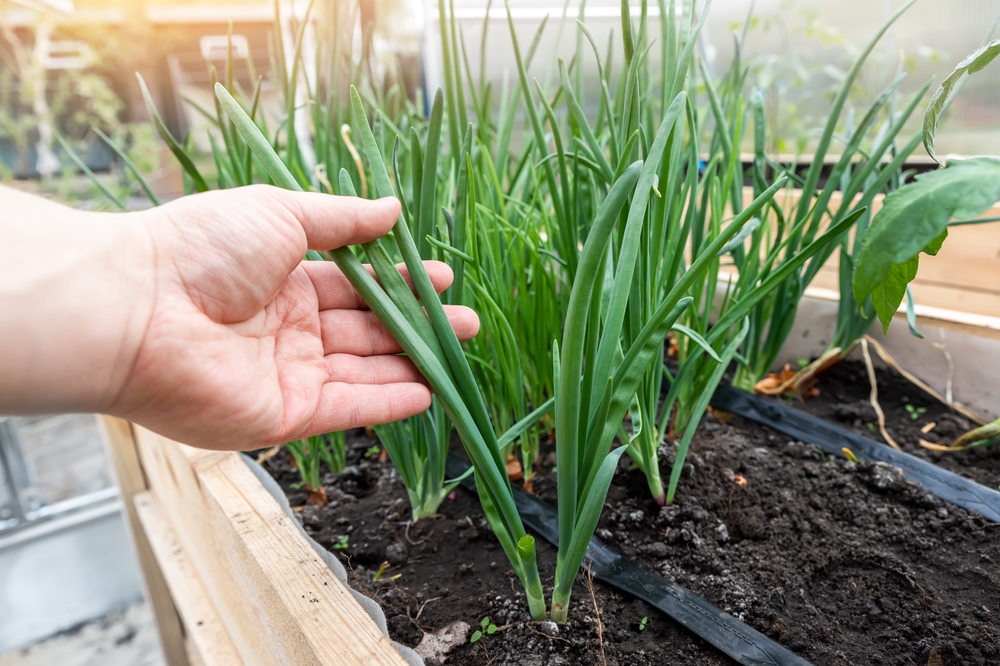
Chives are a hardy herb that grows in tall, slender clumps, adding a touch of green to any garden. Not only are they aesthetically pleasing, but they also offer culinary benefits with their mild onion flavor. Chives grow well in a variety of conditions, from containers to garden beds, and they attract pollinators while deterring pests like aphids. Their flowers, which can range from purple to pink, are also edible.
Chives are easy to care for and thrive in well-drained soil and full sunlight. They are perfect for adding flavor to dishes like salads, soups, and sauces. In addition to being a useful herb, chives can improve the health of your garden by attracting beneficial insects. Their beauty, ease of growth, and practicality make them an excellent choice for any functional garden.
This article originally appeared on Avocadu.
